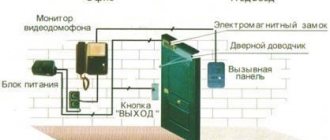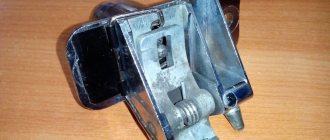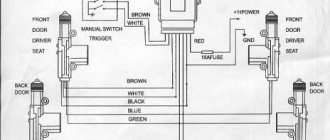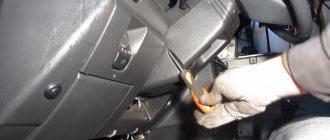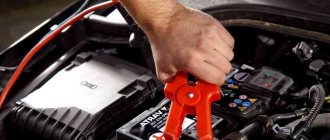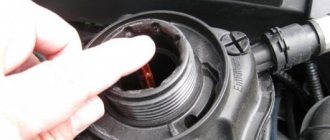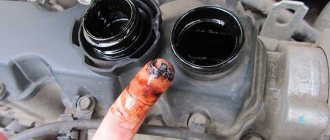The first options that come to mind
What to do if the central lock freezes? The very first thing that comes to mind is heating the key with a lighter. Heat the key thoroughly and insert it into the lock and try to open it. If it doesn't work the first time, repeat the procedure several times.
Do not overheat the key so that the plastic on it does not melt. However, this procedure will not help you in severe frost. Then you can use the next option with fire. Take a piece of wire or something similar and insert it into the lock. To avoid damaging the car's paint, apply something like foil around the wire. After this, we begin to heat the emerging edge of the wire with a lighter. The edge of the twig in the lock will become hot and melt the ice. Do not try to defrost the lock by breathing, you will increase the amount of moisture and it will freeze even more.
What to do if the car does not open
The reason for this annoying situation is the moisture that gets on the seals. It may remain after washing the car if it was not dried well enough. Or arise due to condensation, which forms during sudden temperature changes (it’s warm in the cabin, frosty outside). If you close your car during heavy snowfall, snow gets on the seals, it melts and turns into water, which subsequently freezes and sticks the door tightly. Water can also get into the lock and prevent it from opening.
Opening the lock
The method that our grandfathers used is to heat the key with a regular lighter. The heated key is inserted into the lock and attempts are made to turn it. Without fanaticism and effort, so as not to break the key. Such actions are repeated several times.
The key can be heated with a lighter and inserted into the lock
For modern drivers, special devices have been invented that allow a frozen lock on a car door to be opened in a more civilized way. For example, a keychain that is called a “car lock defroster.” This device runs on batteries and has a retractable probe. It is inserted into the lock and heats up, thereby defrosting the opening mechanism.
If you don’t have such a device at hand, you can pour alcohol or alcohol-containing liquids, vodka, anti-freeze car fluid, or a product that is designed specifically for defrosting a car lock into the lock hole. The latter option is especially good, since the substance displaces frozen water from the keyhole, while covering the contact area with an oily film with a protective effect.
You should not make common mistakes that can lead to sad and irreparable consequences:
- Use hot water.
- Use force to turn the key.
- Bring the lighter to the car door.
Open the door
Opening the lock is only half the problem. After all, the door itself often freezes to the body. In such a situation, you can go in two different ways. The fastest method is suitable for very busy and wealthy drivers. We pull the doors properly, without worrying about the condition of the seals after such actions. If this method suits you perfectly, then choose the side of the machine that is used least often. Broken seals on the driver's side will cause you a lot of inconvenience, and a draft can even cause damage to your health. You shouldn't rely on the guarantee - it doesn't change the rubber bands. You will have to pay for this service yourself.
Thrifty, economical and not in a hurry drivers should consider another option that will keep the rubber bands on the doors safe and sound. To do this you will need to follow the following algorithm:
- Make sure the lock functions and is in the open position.
- Remove the layer of ice on the hood of the car that may prevent the doors from opening. To do this, you can use a special scraper or a plastic object of a suitable shape. It is not worth showing your strength capabilities in order to preserve the paintwork of the car.
- By lightly pressing and tapping on the corners of the door structure, try to destroy the layer of ice that has formed on the door seal. Do similar actions with each car door and even with the trunk in hatchbacks and station wagons.
- If previous actions did not lead to a positive result, then WD-40 or its equivalent will come to the rescue. The product you choose is applied to the rubber seals, which after 10 minutes should soften and pull away from the body.
We use hot water
Using hot water can damage the paintwork. If there is a heat stroke, it may become cracked. So if you use boiling water, you need to hit it almost directly on the lock or protect the entire space around with something.
Another disadvantage of this method is that even if you manage to open the lock, then the water that gets to the surface and into the mechanism must dry, and for this you need to dry it in a warm place, in a box or garage for example!
Liquid for defrosting?
There is a special liquid for defrosting frozen parts. You can buy it at an auto store. Apply a couple of drops to the lock and open the car in a minute. But, as a rule, no one carries this liquid with them, and it lies in the car, and there is no access there. Therefore, we go to the pharmacy and buy alcohol or infusions with the maximum alcohol content.
However, for example, perfume or eau de toilette may not help in this case. The alcohol concentration in some expensive copies is negligible. However, if you take cheap options, such as lotions or just cheap cologne, up to 40 rubles, it can still work, there is much more alcohol - sometimes up to 60%.
Things to always remember
Not everyone knows, but car glass cleaning liquid (windshield wiper) contains a certain percentage of alcohol, so it can be used as a defrosting agent. Of course, if the central lock in your car is frozen, then it is advisable to deal with it using professional means, which will not only extend the service life of the lock, but also quickly solve the problem.
View gallery
The use of open fire is an option, but only as a last resort. It’s better to get a battery-powered hairdryer and put it in the trunk. Door seals are treated with glycerin or a special silicone-based spray for prevention. You can add a little graphite dust to the keyholes and periodically lubricate them.
Do you have a hairdryer at hand?
If you suddenly have the opportunity to use a hairdryer, then everything is solved simply. Defrost the lock using it. This can be resolved within a couple of minutes.
In general, to defrost the lock, it is possible to use anything that provides a sufficient amount of heat without the accompanying supply of moisture. You can even use the exhaust gases of a nearby car. They can be supplied through some kind of hose or pipe. Ingenuity is always the main thing.
The lock turns, but the door does not open
It also happens that you have successfully defrosted the lock, but the door still does not allow entry into the cabin. It is worth noting that you should not pull the door with all your might, as you can leave the seal on the car body. This situation occurs due to freezing of the door seal to the body. To solve this problem, press the handle and push down on the door, then pull it towards you without much force. If unsuccessful, repeat this procedure a couple of times. If you've already done this to the door several times and it won't open, open the tailgate and slam it hard a couple of times. After some time, the doors to the salon should open. To prevent recurrence, lubricate the seal with silicone lubricant.
What can I do to prevent this from happening again with the lock?
Once you find yourself in such an uncomfortable situation, you want to prevent it. What do we have to do? Let's start with the simplest thing: if the owner of the car is a girl, then she will probably have lip gloss or some cosmetics containing fat. We coat the key and insert it into the lock, and turn it a couple of times and take out the key. The applied layer on the internal parts of the lock will prevent its subsequent freezing. Now to more serious methods. You can fill the lock with a special spray; WD-40 or any motor oil, for example the one you use, will also work (however, it is advisable to have a synthetic one).
It is also possible to apply it to the internal parts of the lock using the cosmetic method. The most reliable method for preventing freezing is to disassemble the door and completely lubricate the lock parts with lithol, molybdenum disulfide or grease. Such maneuvers will prevent the problem from recurring, and you will not have to heat anything even in very cold weather.
I’ll add on my own behalf - effectively “dry” the car after washing (after all, this is one of the main reasons), it is advisable to immediately instruct the washer in the warm box to blow out all the locks with compressed air, thereby removing excess moisture from them. Then treat the locks with either alcohol or a special liquid, using WD-40 on the edge. And there is almost a 90% chance that the locks will not freeze.
Now a short video, be sure to watch it.
Now, knowing such simple moments, you will always be prepared for such a problem. Thus, in the article I presented the most common solutions to the problem: “what to do if the central lock is frozen?” Surely there are some other interesting methods for opening doors with a frozen lock, but we have presented the most reliable and proven ones.
I will end here, I think this article is very relevant in winter, sincerely yours, AUTOBLOGGER.
( 6 votes, average: 5.00 out of 5)
Winter is a special time of year for every car enthusiast, when the operation of a vehicle is accompanied by numerous difficulties. After all, it is impossible to predict what other vagaries of nature the car will be subjected to in the coming days. Typical problems include freezing of doors. What to do if the lock on the car door is frozen, how to open it? In particular, this unpleasant situation often happens after washing. But a problem may arise due to prolonged parking in conditions of low temperatures and high humidity. Let's figure out how to fix this.
Preventive measures: how to avoid freezing locks and doors in your car
If the situation is that the doors and locks of the car in winter do not want to close, then they cannot be opened, it is important to take preventive measures:
- lubricate all rubber components of the doors with glycerin, after washing and drying;
- Camphor is also suitable for these purposes;
- “Spindle” works well in such conditions - oil for machine tools, which does not freeze even at very low temperatures;
- silicone lubricant in the form of a spray is an excellent tool for treating rubber seals if the car door does not close or open at sub-zero temperatures;
- if the door is frozen, treat the door hinges ahead of time;
- periodically blow out the locks with compressed air - this way you can avoid the accumulation of moisture and the formation of ice;
- treatment with defrosting spray.
Such preventative work should be carried out after each serious drop in temperature. And thoroughly wipe the car after every wash.
The most effective methods for opening a frozen lock
What to do and what to do if the lock does not turn. How to open? First of all, there is no need to panic or fall into hysterics, since there are a huge number of solutions to the situation. Let's consider the most effective options. You can open the central locking using a liquid key (or a lock defroster).
Another effective way (if you don’t have a special product on hand, or for some reason you don’t want to use winter car chemicals) is to use an open fire - regular matches or a lighter. It is necessary to carefully warm up the key with the lock and, having inserted it into the hole of the lock, try to tug a little. This must be done very carefully so as not to break the key itself.
Attention: if the lighter has a directional flame, then there is a possibility of heating not only the key, but also the lock itself, and this is very dangerous. You can also use any products containing alcohol, for example, eau de toilette or cologne, as well as the alcohol itself. This method is effective due to the properties of such organic compounds. Alcohol can dissolve ice due to the active release of heat.
Another way to help defrost a frozen lock after washing is to use windshield washer fluid or anti-freeze. When using such a modern product, do not forget that it contains a particularly aggressive substance - isopropyl alcohol, which is harmful to the skin.
You can also use kerosene-based products designed to loosen nuts. But there are some nuances here. Such substances are hygroscopic (similar to brake fluid), which is why, along with being effective, they can only aggravate the situation in the future, since they draw in moisture.
How to open a frozen car lock?
The problem of a frozen lock is typical for both those cars that have a central lock and those that do not.
If a car with central locking does not open when you press the button, you should not immediately sound the alarm. The reason may be that the lubricant of the actuators has thickened in the cold. Often the problem is solved by opening the lock with a key. If this does not help: the key does not turn, or it cannot be inserted into the well, you will have to resort to more radical measures.
You can try to melt the frozen ice in the castle using one of the following methods.
Hot air supply.
Blowing hot air over the lock is one of the most accessible and effective methods.
In mild frosts down to -5 degrees, it is enough to warm the castle with your own breath. To do this, you should fold the palm of your hand into a tube, place it against the keyhole and breathe into this improvised air duct. The method works, but under certain conditions:
- the ice layer is quite thin;
- temperature not lower than -5 degrees.
In severe frost, this method not only will not help, but can also aggravate the situation. The air exhaled by a person contains a high concentration of water vapor, which, at a significant negative temperature, instantly condenses and freezes, increasing the thickness of the ice layer.
A more effective solution, which is almost always at hand, is the exhaust gases of a nearby car. Although there is enough water vapor in them, their temperature is much higher and they can cope with any layer of ice in any frost. To do this, it is enough to feed the exhaust from a nearby car with the engine running through a hose to the keyhole.
A stream of warm (hot) air from a household or construction hair dryer is even better suited for defrosting the lock. All that remains is to figure out where to get it and how to connect it.
Other methods of warming up the lock.
You can warm up the castle not only with air. Suitable for these purposes:
- key;
- thin wire or small metal object (it should fit into the keyhole);
- hot water or sand.
With the key everything is simple. You need to heat it on the flame of a lighter (you need to know when to stop and not melt the plastic head) and insert it into the well. After this, all that remains is to try turning the key. If necessary, repeat the procedure several times until the lock opens.
IMPORTANT! Applying excessive force, especially trying to turn the key using pliers or a lever, is not acceptable! The result may be a broken key, which in the absence of a duplicate will only add to the problems!
The wire is treated in the same way - it is inserted into the keyhole, and the other end is heated with a lighter. When heated, the wire melts the ice. Periodically they take it out and try to open the car with the key.
ATTENTION! It is not recommended to directly heat the lock with a lighter flame - this is dangerous for the coating of the car and the lock mechanism.
Hot water or sand in a suitable container (bottle or bag) attached to the castle will warm up its entire area quite quickly.
The mechanism will thaw even faster if you pour hot water on it (there are often tips to use boiling water for this). However, experience shows that such harsh measures are more likely to cause harm:
- with a significant sharp change in temperature (the metal of the door has cooled down to the air temperature outside, and boiling water with a temperature of about 100 degrees is poured onto it), the paintwork, which is exposed to a stream of hot water, will crack with a probability close to 100%;
- some of the water will definitely get into the well and internal cavities, which can subsequently aggravate the freezing problem;
- the same part of the water can cause damage to the electrical part of the central locking and other wiring hidden in the doors, for example, for window regulators.
Other methods of dealing with ice using improvised means.
You can melt the ice in the castle without resorting to heating. Alcohol-containing liquids are well suited for this:
- pure medical or technical alcohol;
- cologne, eau de toilette or perfume;
- Windshield washer fluid (“anti-freeze”).
When alcohols come into contact with ice, they dissolve it, causing the release of heat. To defrost a lock in this way, simply inject liquid into the keyhole using a syringe or use a spray bottle. In a few minutes the problem will be resolved.
Practical note! From perfumery, only those liquids whose alcohol content exceeds 40-50% are suitable for this method (for example, triple cologne with a concentration of more than 60%). You should be careful with anti-freeze - it contains isopropyl alcohol, and this substance is harmful to health and chemically aggressive.
As a last resort, you can achieve a positive effect - unlocking the lock - by using exotic products such as Vaseline or nut loosening fluid (for example, kerosene-based WD-40).
Vaseline is applied to the key and inserted into the hole of the lock, trying to turn it periodically. It should be noted that it will take a lot of time to tear off the doors in this way.
WD-40 is sprayed from a can onto the lock and borehole. However, you need to remember that this liquid is hygroscopic (“pulls” water) and can cause problems in the future.
The best option for opening a frozen lock would be towing the car to a warm garage, where it will warm up evenly, and the owner will have the opportunity to dry the parts and take the necessary preventive measures - lubricate the lock parts with grease or similar lubricants, treat the door seals with silicone to prevent freezing problems in the future .
An effective way to open a frozen lock is to use tools such as a defroster keychain or a “Liquid Key”.
You can purchase them at any auto store and always have them on hand when the air temperature drops.
What can I do to prevent the lock from freezing?
To ensure that neither doors nor locks freeze, it is important to follow some rules. Let's look at them in more detail. Have you noticed that car locks systematically freeze? Just try to dry them more thoroughly. What to do for this? Leave your vehicle in an insulated box or garage for literally a day, until all the moisture in the door holes evaporates.
When clearing snow from your car, be sure to carefully brush along the driver's door panel from the very bottom and top. Otherwise, snow will be able to get inside, it will then quickly melt and then easily freeze again in the cold.
In order to avoid freezing of car doors after washing, thoroughly wipe the rubber seals and be sure to lubricate them with a special water-repellent liquid.
Before parking at night, in order to prevent the windows in the car from freezing, it is necessary to ventilate the interior. If freezing, however, could not be avoided, and the car is equipped with electric windows, do not open them under any circumstances. In this case, damage to the electric drive cannot be avoided. First, warm up the inside of the car, and only then, when the window has thawed, can it be opened and then treated with silicone-based lubricants.
What to do if a car door is frozen?
You left your car in the cold for literally two or three hours and when you try to open it you realize that the door is frozen almost tightly. What to do? How to fix it? If a car door is frozen, you can do this: using a brush (or, if you don’t have one, any other tool available to you), carefully clear the snow from the edges of the car doors. If you don’t have a brush at hand, and your tool is a knife, a regular screwdriver or some kind of key, then you should act very carefully and carefully. Very carefully pull the car door towards you. She didn't give in at all? Then apply a little pressure and gently tap the edges. Then pull the door towards you again. Repeat this simple procedure several more times until you manage to open the doors.
If one of the doors is very frozen, you can try opening the trunk of the car or the second door. In addition, you can use all kinds of alcohol-containing liquids. It is necessary to lubricate the seals and door edges with such products. An excellent effect is achieved using a regular hair dryer. But, of course, if the door is frozen in the parking lot, then this method will not be available for use.
Never pour boiling water on car doors, as it can easily damage the paintwork. Do not use extreme force when opening the door, as this may damage the handles or the door itself. It would also not be a good idea to tear off a frozen seal from a car door using coins, keys or knives.
Popular options
If only the castle is captured, then you can hope for a quick release of the car from its shackles. When other systems are frozen with ice, including icing of glass, door gaps, wheels, pads, etc., the methods described below will not work.
Option 1
In the case when the lock in the car freezes on the driver’s side, motorists who have already been burned by this know what to do first. Most often they try to get inside through other doors or through the trunk, if their size allows. Sometimes these simple steps save energy and time.
Starting the engine in the cold
Starting a vehicle engine in severe frost conditions should be taken very seriously, since in this situation it is quite difficult to do. From the very beginning, you need to think about how to warm up the battery. To do this, turn on the ignition and low beam for just a couple of minutes. This way you can quickly warm up the battery.
Before turning on the ignition, carefully check that all devices that draw energy from the battery are turned off. And only when the battery warms up can you start the engine. To do this, you need to depress the clutch and then turn the ignition key, turning on the starter. All this will take literally a few seconds. As a rule, such operations help start the engine. But in severe frost, they may not provide the desired effect, which will require repeating the above algorithm until the desired result is obtained.
The lock in the car froze
There are several ways to fix the frozen lock problem.
1.
First you need to check if the locks on all the doors are frozen. Those who drive a station wagon or SUV should also check the tailgate.
If at least one door opens, then we can assume that you have solved the problem. At a minimum, you will be able to get to the driver's seat, turn on the heater and freeze the locks using the heat from the cabin.
2.
If you were able to insert the key into the lock all the way, you can try to open the lock by turning the key in different directions. At the same time, you can tap on the lock and around it.
This method should be tried on all doors. The main thing is not to overdo it, as the key can easily be broken.
3.
If the previous method did not work, try heating the key (with matches, a lighter) and try all the above steps again.
4.
If you don’t mind covering your car door, you can try heating the lock itself with an open fire.
5.
Prepare a plastic bottle, inflatable balloon or other container and fill it with boiling water. Next, lean it firmly against the lock and try to warm it up, but do not forget to turn the key periodically.
6.
You can try warming the lock with a hairdryer. Of course, this method is possible if the car is near your house and you have a long enough extension cord and a hair dryer. You can ask your neighbors to help you.
7.
Purchase a lock defrosting agent. It is better if it has a tube or a thin spout, since you will have to inject it into the lock. After this, insert the key into the lock and try to twist it.
8.
You can also heat the lock using exhaust gases from a nearby car. To do this, you will need a hose of the required diameter and the consent of the car owner.
Place one end of the hose on the exhaust pipe and keep the other close to the lock.
9. Naturally, if none of the methods work, then you have two choices: either wait for warm weather, or call a tow truck and take the car to a warm place.
Opening with improvised means
You can use a lighter, preferably not an ordinary one, but an autogenous one. You need to try not to damage the paint, and also not to hold the fire for too long. Another rather dangerous, but perhaps the most effective method is the use of brake fluid. If your car door lock is frozen, this will definitely help. But you should be careful not to get it on the paint, as it will be damaged. Therefore, after using this method, it is advisable to rinse the whole thing with water, but in a warm room.
Hot objects (cigarette lighter, etc.) can be applied directly to the lock. Warm air always helps, too, but if you don’t have a hairdryer nearby, you’ll have to deal with it yourself. To do this, you can take a thin tube, like a straw, insert it into the keyhole and breathe for a couple of minutes. This almost always works. You can, of course, pour warm water over the lock, but this can cause a lot of problems, especially if the water starts to freeze.
Using eau de toilette is also an option. The composition contains elements that help melt ice. But you need to take into account that there may be aggressive components that can cause corrosion of the metal. However, in emergency situations this is an excellent solution that will suit everyone.
Not only the door locks freeze, but also the doors themselves.
We've sorted out the locks. Let’s say that you managed to open the lock, but you couldn’t open the door because it was frozen to the body.
1.
As in the previous example, try to open all the doors.
2.
This may sound trivial, but try pulling the doors harder. But you should be careful not to break the handle or cause other damage to the car.
Try this method on all doors except the driver's, or even better, try the door that is least used.
3.
Try using a wooden or plastic lever to open the door. To do this, you need to insert it into the cracks between the door and the body.
Be careful, because in addition to the damage mentioned above, you can also damage the metal part of the door or body. Despite this, this method may well help you.
4.
Use special products that will prevent the rubber door seals from freezing to the car body. It will help if all other methods failed.
5.
Again, a tow truck will come to the rescue if nothing works and if there is money.
What not to do if your car lock is frozen!
Pour boiling water over the castle.
You will damage the car's paintwork, even if not the first time; if this method does not work and you do not open the frozen lock, then you will encounter an even more complex problem and will not open the door at all.
Push and pull the key in the lock cylinder.
If you break the key, then you will think:
“why did I do this, I should have run for the defroster”
Avoid this idea and spend your time finding a better solution.
